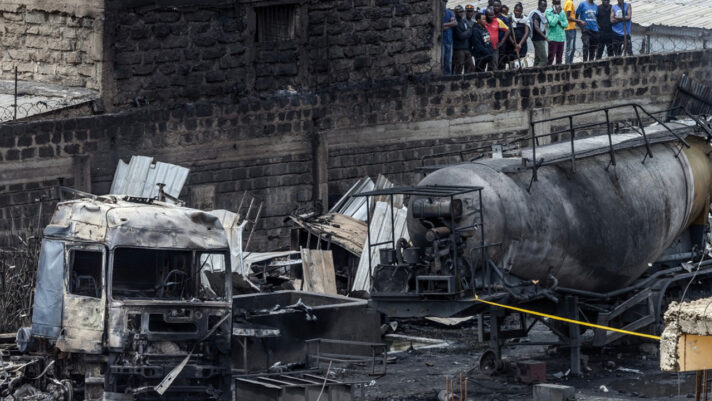A gas truck laden with canisters exploded in the densely populated Mradi area of Embakasi, Nairobi, unleashing a massive blaze that claimed three lives and injured 280 people.
The explosion occurred close to midnight on February 1, creating chaos and devastation in the southeast of the Kenyan capital.
Firefighters heroically battled the blaze for over nine hours, finally bringing it under control by 9:00 am. The blast, which could be heard several kilometers away, ignited a colossal fireball, causing extensive damage to properties, vehicles, and commercial establishments in the residential neighborhood.
The Deputy Inspector of Police, Douglas Kanja, reported the arrest of a guard at the site, with ongoing investigations to determine the cause of the explosion. The affected area, home to about one million people, has long harbored concerns among residents due to daily arrivals of gas trucks.
Beautician Vivian Njeri, a survivor with injuries to her back and hands, described the panic and chaos as residents ran for their lives amidst the raging fire. Government spokesman Isaac Maigua Mwaura confirmed three fatalities and the hospitalization of 280 individuals.
Despite the tragic event, concerns about the safety of gas-related activities in the area arise. The Kenyan Energy and Petroleum Regulatory Authority (EPRA) revealed the rejection of permission three times last year for a liquefied petroleum gas storage and filling plant at the explosion site, citing safety distance issues and high population density.
This incident echoes a tragic history, recalling the 2011 pipeline fuel spill that claimed over 100 lives in Embakasi and the 2018 Gikomba market blaze that killed 15.



